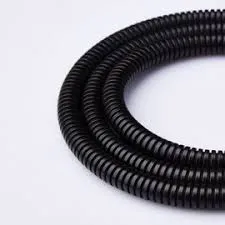drag chain link
Understanding Drag Chain Links Essential Components for Smooth Operations
In the world of machinery and automation, drag chains play a critical role in ensuring efficiency and durability. A drag chain, often referred to as a cable carrier, is designed to guide and protect cables or hoses in motion, particularly in moving applications such as robotic arms, CNC machines, and conveyor systems. At the heart of a drag chain’s functionality are the drag chain links, which are essential components that contribute to the overall performance and reliability of the system.
Drag chain links are the building blocks of a drag chain, connecting each segment to facilitate smooth movement and organization of cables or hoses. These links are typically made from durable materials such as plastic, polyurethane, or metal, depending on the application requirements. The choice of material not only affects the weight and flexibility of the drag chain but also its resistance to wear, chemicals, and environmental factors.
One of the main advantages of using drag chain links is their ability to reduce friction and wear on cables and hoses. By keeping these components organized and secured, drag chains minimize the risk of tangling or damaging critical wiring during operation. This is particularly important in high-speed applications where the constant motion can lead to rapid deterioration without proper support. The design of drag chain links allows for easy installation and maintenance, ensuring that replacing worn-out links or adding new segments can be accomplished quickly and efficiently.
drag chain link

Another important feature of drag chain links is their flexibility in design. They come in various shapes and sizes, allowing for custom configurations that can accommodate specific needs. Whether it’s a tight space or a long run in an assembly line, drag chain links can be tailored to fit the scenario perfectly. Moreover, manufacturers often offer options for hinged or openable links, which enable easy access to the cables or hoses inside the chain without needing a complete disassembly.
In high-precision environments, such as semiconductor manufacturing or aerospace, the quality of drag chain links is crucial. Failure of a single link can lead to costly downtime and equipment damage. Thus, investing in high-quality drag chain links from reputable manufacturers is essential for ensuring long-term operation and reliability.
In conclusion, drag chain links are indispensable components in modern machinery and automation systems. By providing a reliable means of organizing and protecting cables and hoses, they significantly enhance the efficiency and longevity of equipment. With the continued advancement in technology and manufacturing processes, the future of drag chain links looks promising, paving the way for even more innovative solutions in the field of automation.








